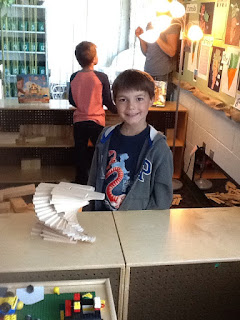"I believe that the unity of mind and body is an objective reality. They are not just parts somehow related to each other, but an inseparable whole while functioning. A brain without a body could not think … the muscles themselves are part and parcel of our higher functions."
~Moshe Feldenkrais
The concept of movement in the kindergarten classroom is not new. Kindergarten teachers around the globe know that young children love to move. The truth is, children need to move. As the academic expectations placed on kindergarten students have grown, many teachers have replaced opportunities to move with long periods of time on the carpet listening to instruction. It is no surprise, then, that the number of referrals for ADHD and behavior related concerns has risen. Has children's development changed? I would argue, no. I believe that children are perhaps not spending time moving outside of school as much as they have in the past, but time devoted to movement in school has reduced as well.
Brain Breaks, Sensory Breaks, Movement Breaks, Oh, My!
Like many teachers, I have tried to counteract the reality of decreased physical activity by having regularly scheduled brain breaks and movement breaks. Go Noodle and Adventure to Fitness have been great companions the past few years. Too, I have found ways for students who need them to have sensory breaks outside the classroom. This year, however, I have switched my focus from planned movement breaks to finding ways to integrate movement in the classroom.
Hopefully, we all have people in our professional lives who encourage us to stretch our thinking. One of mine is our Occupational Therapist, Eric. Eric has a way of planting a seed in my head, knowing that it will perhaps sit dormant until it is ripe for growing, but at the same time believing that it will. This has happened time and time again. One such seed is the belief that movement should occur naturally throughout the day. I am not completely there yet, but I have been finding ways to make integrated movement a reality.
Honoring Students' Knowledge of What Their Bodies Need
Most students know what their body needs to feel comfortable. For some, it is sitting cross-legged on the carpet, for others it is kneeling. This year, in my classroom, I have chosen to allow both, as long as it does not impair another student's ability to see or interact with the lesson. I also let my students sit wherever they choose on the rug--again, as long as they respect another's right to learn. I recognize that some students are not ready to handle this much choice, yet, and in those cases I designate a specific area just for them, which seems to help them regulate.
I extend this same philosophy to work time. I do not have assigned spots at tables. In fact, students have the choice to work at a table, sitting on the floor with a clipboard on their lap, standing up at a table or shelf, or lying down--which does double duty by helping to strengthen a child's core (Another tidbit I learned from Eric).
I love that this picture captured the boy on the right checking his pencil grip!






















No comments:
Post a Comment